Uropi: U pasiòn po Italia - Une passion pour l'Italie - A passion for Italy
* Uropi Nove 107 * Uropi Nove 107 * Uropi Nove 107 *
★ ★ ★
Roma, Piazza Navona
★ ★ ★
U pasiòn po Italia
★ ★ ★
Italia se u land we av talvos deten liente soino: de antiki Roma we sì, ki veti Grecia, de kulba ni Europan civilizadi, de land Bel Artis: muzik, pictad, skulpad, arkitektad… de land we av talvos facinen skrivore id poète… Shakespeare stalì mole od hi piese in Veneza, Verona… Romeo id Ʒulieta av viden u mita ov un anmozli liam po tale jun liamore moldi… pos Stendhal … Keats, we vidì ingruben in Roma… Goethe we skrivì "Kennst du das Land wo die Zitronen blühn ?" (Kon tu de land wo limonare blum ?). Da sì puntim mi siavi inprès wan i vizì po de pri vos aranʒare polen ki aranʒe gon un azuli hel su ber Lagi Maʒiòre… de krije krijovlis be u soli morna in Verona… Je se de land polis ki insaran nome: Veneza, Florèns, Siena, Verona, Napol, Palerma, Sirakuza…
Id pos de linga, Itali, we se som u veri muzik wej note se ji klar id luci vokale a, e, i, o /ɔ/, u, wim de prigeni klore su de palet u pictori. Ka prijad je se voko Itali ! Je se wim begusto, be u caj somu posmidià, u bol jasic frutis: gruve, pece, plume, cerìze, melòne…
Ba di se konen pa talun… i volev voko vo ov du Itali pole we se ne mol konen id wen i av novem diskroven: Brecia id Gubbio.
★ ★ ★
Une passion pour l'Italie
★ ★ ★
C'est un pays qui a toujours fait rêver: La Rome antique qui fut avec la Grèce ancienne le berceau de notre civilisation européenne, le pays des Beaux-Arts: la musique, la peinture, la sculpture, l'architecture… le pays qui a toujours fasciné les écrivains et les poètes … Shakespeare situe un grand nombre de ses pièces à Vérone, à Venise… Roméo et Juliette sont devenus le mythe de l'amour impossible pour tous les jeunes amoureux du monde entier… puis Stendhal… Keats qui est enterré à Rome… Goethe qui a écrit "Kennst du das Land wo die Zitronen blühn ?" (connais-tu le pays des citronniers en fleurs ?". Ce qui a précisément été mon impression lorsque j'ai vu pour la première fois les orangers remplis d'oranges se détachant sur un ciel azur au bord du Lac Majeur… les cris des martinets par un matin ensoleillé a Vérone… c'est le pays des villes aux noms enchanteurs : Venise, Vérone, Florence, Sienne, Naples, Palerme, Syracuse…
Et puis la langue, l'italien, qui est lui même une véritable musique dont les notes sont ses voyelles claires et lumineuses a, e, i o /ɔ/, u, pareilles aux couleurs primaires sur la palette d'un peintre. Quel plaisir on a à parler italien! C'est comme déguster, par une chaude après-midi d'été, un bol de fruits glacés: raisins, pêches, prunes, cerises, melons…
Mais ceci est connu de tous… Je voudrais vous parler de deux villes italiennes qui ne sont pas très connues et que j'ai récemment découvertes: Brescia et Gubbio.
★ ★ ★
Horèl, Piazza della loggia, Brecia
★ ★ ★
A passion for Italy
★ ★ ★
Italy is a country which has always made people dream: Rome which was, with ancient Greece, the cradle of our European civilisation, the land of Fine Arts: music, painting, sculpture, architecture… the country which has always fascinated writers and poets … Shakespeare staged many of his plays in Verona, in Venice… Romeo and Juliet have become the myth of impossible love for all young lovers around the world… then Stendhal… Keats who is buried in Rome… Goethe who wrote: "Kennst du das Land wo die Zitronen blühn ?" (Do you know the land where the lemon-trees grow?". This was precisely my impression when I first saw orange-trees full of oranges standing out against an azure sky on the banks of Lake Maggiore… the shrieks of swifts on a sunny morning in Vérone… it is the land of cities with enchanting names: Venice, Verona, Florence, Siena, Naples, Naples, Palermo, Syracuse…
And then the language, Italian, which is itself a real music whose notes are its clear and bright vowels a, e, i o /ɔ/, u, like the primary colours on a painter's palette. What a pleasure it is to speak Italian! It is like savouring, on a hot summer afternoon, a bowl of ice-cold fruit: grapes, peaches, plums, cherries, melons…
But everybody knows this… I would like to speak about two Italian towns that are not so well-known and which I have discovered recently: Brescia and Gubbio.
★ ★ ★
Brecia
★ ★ ★
De turìst vizitan Norditalia, pos avo vizen Lag Maʒiore, Lag Komo, pos avo halten a Milàn id Bergàm, nem de autoràd do Verona id Veneza, faran pas Brecia. Od dal he viz u moderni pol ki mole industrije id subemerkade id naturim he far pro, ane halto.
I som se cansi par i av Itali frame we dom ne dal od Brecia, in Francia Corta, u regiòn vinius, id lu detì ma diskrovo de pol. Wim nerim tale Itali pole, Brecia av u "centro storico" (històri centra) we dik no de ricad u longi històri, u dali paseni. Prim un doʒ ne faro in de centra vagim: wim in de majsan pole, je ste tiomole trafik id obtope id mol poje parkistàs. Brecia av finden de sluz: lu av struen u brijnovi metrò faran od de periferia a de centra, ne un udetrèn, priʒe un oprenali metrò, we se in fakt u rutemi makin.
Un avèn vagim su u periferi parkia mol ner de kirkiràd, las de vag za, id step in u moderni vagòn 21i suntjàri, pos nu far ru in tem eke 80 jare. Nu it us de stasia su plaz Vittoria, u plaz struen in 1932 in de Mussolini ev, ki de karakteristiki arkitektad, struene id monumente. Wan un vad ap eke stape, un it in de Regenadi tem su Piazza della Loggia, id in Midi Eve su Piazza del Duomo (Plaz de katedrali) ki de Duomo vecchio (seni katedràl) struen in 11i suntjàr, ki ji kirki form tipikim Romaniki, id u poj dales de Torre della Pallata, struen in 1254, de uni tor restan od de midievi wal. Su Piazza del Duomo ste os de novi katedràl (Duomo nuovo) struen intra 1604 id 1825.
Is un vad jok u poj dales un avèn a de Roman forum, pos a de monastir San Salvatore-Santa Giulia funden in 753 pa Desiderius, futuri raj Lombardis.
★ ★ ★
Piazza Vittoria, Brecia
★ ★ ★
Brescia
★ ★ ★
Le touriste qui visite l'Italie du nord, après avoir vu le Lac Majeur, le Lac de Côme, après avoir fait halte à Milan et à Bergame, prend l'autoroute pour Vérone et Venise. En passant, il aperçoit au loin Brescia, ville moderne remplie d'industries et de supermarchés, et bien entendu, il poursuit sa route.
J'ai la chance d'avoir des amis italiens qui n'habitent pas loin de Brescia, dans la Francia Corta, région de vignobles, et m'ont fait découvrir la ville. Comme presque toutes les villes italiennes, Brescia a un centre historique, témoin de la splendeur d'une longue histoire et d'un passé lointain. Tout d'abord, il ne faut pas se rendre au centre-ville en voiture: comme dans la plupart des agglomérations urbaines, la circulation y est engorgée et il y a très peu d'endroits pour se garer. A Brescia on a trouvé une solution: on a construit un métro flambant-neuf qui relie la périphérie au centre, un métro aérien plutôt que souterrain, qui est en fait une machine à remonter le temps.
On arrive en voiture sur un parking à proximité de la rocade, où l'on abandonne la voiture, on monte dans un wagon du 21e siècle, puis on parcourt dans le temps 80 ans en arrière. On débarque sur la Piazza Vittoria (Place de la Victoire), construite en 1932 à l'ère mussolinienne dont elle possède l'architecture caractéristique dans ses bâtiments et ses monuments. Lorsqu'on s'éloigne de quelques pas, on traverse une place Renaissance, la Piazza della Loggia, puis on arrive au Moyen Âge sur la Piazza del Duomo (Place de la cathédrale) où se dresse le Duomo vecchio (vieille cathédrale), bâtie au 11e siècle, de forme circulaire typiquement romane. Un peu plus loin, on peut voir la Torre della Pallata (1254), dernier vestige de l'enceinte médiévale. Sur la Piazza del Duomo se trouve également la nouvelle cathédrale (Duomo nuovo) construite, elle, entre 1604 et 1825.
Si on s'éloigne encore un peu, on arrive au Forum Romain, puis au monastère de San Salvatore-Santa Giulia fondé en 753 par Desiderius, futur roi des Lombards.
★ ★ ★
Piazza della Loggia, Brecia
★ ★ ★
Brescia
★ ★ ★
The tourist visiting northern Italy will see Lake Maggiore, Lake Como, halt in Milan and in Bergamo, and then proceed on the motorway towards Verona and Venice. On the way, he can see Brescia from afar, a modern town full of industries and supermarkets; he doesn't feel like stopping there, and drives on.
I was lucky to have Italian friends living not far from Brescia, in Francia Corta - a vineyard area - who showed me the town. As nearly all Italian towns, Brescia has a centro storico (historical town-centre) displaying the riches of a long history and a distant past. First of all, you should not drive into the town-centre where you would find the usual traffic-jams and very few spaces to park. In Brescia they have found a solution: they have built a brand-new metro linking the outskirts to the centre, mostly a surface rather than an underground railway, but which is in fact a time machine.
You arrive with the ring road on the outskirts of the town where you can park close to a tube station. You leave your car there and step into a modern 21st century carriage. Then you travel in time 80 years back. You get out of the station on to Piazza Vittoria (Victory Square), which was built in 1932 during the Mussolini era: it has the caracteristic architecture of the time in its buildings and monuments. When you walk a few steps away, you cross a Renaissance square, Piazza della Loggia, then you enter the Middle Ages on Piazza del Duomo where you can see the Duomo vecchio (old cathedral) built in the 11th century, in a typicall Romanesque circular shape. Further on, the Torre della Pallata (1254) is the only remaining tower of the medieval walls. On Piazza del Duomo you can also see the new cathedral (Duomo nuovo) built between 1604 and 1825.
Walking away, you arrive at the Roman Forum, then at the monastery of San Salvatore-Santa Giulia founded in 753 by Desiderius, the future king of the Lombards.
★ ★ ★
Duomo vecchio, de seni katedràl
★ ★ ★
Antiki Brecia
De nom Brecia (Itali Brescia, Latini Brixia) ven od u Gauli rod *brica-, briga- sinan 'koln', 'holia', 'kibel'. In VII suntjàr for Krist u trup Cenomanis od de regiòn aròn Le Mans in Gaulia venì sia stalo in de aria wo lu fundì Brixia, li kebipol. Cenomane prim kambì gon Roma, ba vidì vikten in 200 f.K. id udeseten in 197 f.K. Dapòs lu vidì injuten in de Roman Republik id Roman politane in 49 f.K ude Cezar.
La Brescia antique
Le nom de Brescia (en latin Brixia) vient d'une racine gauloise *brica-, briga- qui signifie 'colline', 'hauteur', 'sommet'. Au VII siècle av JC une troupe de Cénomans, venus des alentours du Mans en Gaule, s'établit dans la région où ils fondent Brixia, leur capitale. Les Cénomans ont d'abord combattu les Romains, mais après leur défaite en 200, et leur soumission en 197 av.J.-C., ils sont intégrés à la République Romaine et deviennent citoyens romains en 49 av.J.-C., sous César.
Ancient Brescia
The name of Brescia (in Latin Brixia) stems from a Gaulish root *brica-, briga- meaning 'hill', 'height', 'summit'. In the 7th century BC a troop of Cenomans from the region of Le Mans in Gaul, settled in the area founding their capital: Brixia. The Cenomans first fought against the Romans, but were defeated in 200 BC, and submitted in 197. They were annexed to the Roman Republic and became Roman citizens in 49 BC, under Cesar.
★ ★ ★
De Kapitòl
★ ★ ★
De Roman forum
Je s'un od de grenes id bunes begaren Roman monumenti samad in Norditalia.
De Republikan Saitia, we s'un udeteri samad kwer rektangli halis vidì struen in de pri suntjàr for Krist. Za un moz vizo magibèl Roman mozaike id freske koegli a daze Pompei. De Kapitòl, struen in 73 pos Krist sì de maj vezi tempel in antiki Brixia, dediken a Jupitèr, Junona id Minerva. Bezàt ja de Roman teatra vidì struen in de Flavian epòk (69-96 p.K, Vespasian - Titus - Domisian), id mozì inteno 15000 spektadore.
Le forum romain
C'est un des plus grands et des mieux conservés de l'Italie du nord.
Le Sanctuaire Républicain, ensemble souterrain de quatre salles rectangulaires a été construit au premier siècle avant notre ère. On peut y voir de superbes mosaïques romaines et des fresques comparables à celles de Pompei. Le Capitole, érigé en 73 av.JC était le temple le plus important de l'antique Brixia, consacré à Jupiter, Junon et Minerve. A côté se trouve le théâtre romain construit a l'époque flavienne (69-96 de notre ère: Vespasien - Titus - Domitien), et qui pouvait accueillir 15000 spectateurs.
The Roman forum
It is one of the biggest and best preserved in northern Italy.
The Republican Sanctuary consists of four underground rectangular chambers which were built in the first century BC. There you can see superb Roman mosaics and frescoes that are comparable to those of Pompei. The Capitol, built in 73 BC was the most important temple in ancient Brixia, dedicated to Jupiter, Juno and Minerva. Next to it is the Roman theatre built in the Flavian period (69-96 AD: Vespasian - Titus - Domitian), and which could accommodate 15000 spectators.
★ ★ ★
Roman freske
★ ★ ★
De Rainia Longobardis
Longobarde, u Germani polk venen od Skandinavia, invadì Norditalia in 568-569 p.K. id fundì za u rainia ki ji kebipol Pavia. Ov de nom Longobardi som (Lombardi in moderni Itali), historiste kovèn ne: eke dez te je sin longi barbe (Vz Doski: lang = longi id Bart = barb), par Longobarde razì ne sia, altene te je sin longi hake (o lanse) wim in de vord "helbàrd".
Le Royaume des Longobards
Les Longobards, ou Lombards, peuple germanique originaire de Scandinavie, envahit l'Italie du nord en 568-569 de nottre ère et fonde un royaume dont la capitale est Pavie. Sur le nom Longobardi lui-même (Lombardi en italien moderne), les avis divergent: selon certains il signifie longues barbes (cf allemand: lang = long et Bart = barbe), parce que les Lombards ne se rasaient pas, pour d'autres, il signifie longues haches (ou lances) comme dans le mot "hallebarde".
The Kingdom of the Lombards
The Longobards, or Lombards, were a Germanic tribe originating from Scandinavia, who invaded northern Italy in 568-569 AD and founded a kingdom whose capital was Pavia. Experts disagree on the origin of the word Longobardi (Lombardi in modern Italian), some assert that it means long beards (cf German: lang = long and Bart = beard), because the Lombards did not shave; for others, it means long axes (or spears) as in the wordt "halberd".
★ ★ ★
De rainia Longobardis (in rozaranʒi)
★ ★ ★
De Longobardi rainia sì mol maj vasti te de Lombardi provinse odia: je distensì od Alpe a Istria id od Trentinia a Toskania (Langobardia Maior) id su centra id sud Italiu, od Ankona a Kozensa (Langobardia Minor). Je sì discizen in numari dukias, tramìd wen de dukia od Brecia. Longobarde avì talvos du mozli fense: be nord, beùve Alpe, de Franki Rainia, id be sud, in Roma, de paps.
In 756, duk Daufer o Desiderius (in Latini, re Desiderio in Itali, da se "raj Dezìr"), superen pa de paps id de raj Frankis Pepin de Kurti, ustelì vido de raj Longobardis. Pos de mor Pepini, Desiderius davì hi dota a maʒo a Karel Magi, un od de du sone Pepini. Un kon ne de veri nom da dotu: foram ce sì nomen Desiderata, ba da sì un iren tradutad, pos de famos poèt Manzoni usfindì po ca de nom Ermengarda. Desiderius volì sim supero Karel Magi gon hi frat Karloman, ba hi plan aligadi ki de Franki raj funsionì ne. Karloman morì in 771 id Karel Magi runegì suprù hi Longobardi maʒa solem tri jare pos de maʒad. Ermengarda rufligì in de monastir San Salvatore in Brecia. Irgen ki paps Adriàn I we volì ne rekono de rege de Longobardi prinsu, Desiderius invadì de papsi teritorius, ba de paps calì Karel Magi a eld. Sim u wer usbrekì intra Longobarde id Franke. Karel Magi ustelì uvìto Alpe, id kovaldì Pavia in 774. Desiderius vidì inkluzen in u monastir. Sim fendì de Longobardi rainia.
★ ★ ★
Le royaume des Lombards (Longobardi) était beaucoup plus vaste que les actuelles provinces lombardes: il s'étendait des Alpes piémontaises a l'Istrie et du Trentin à la Toscane (Langobardia Maior) et au centre et au sud de l'Italie, d'Ancône à Cosence (Langobardia Minor). Il était divisé en de nombreux duchés, dont celui de Brescia. Les Longobards avaient en permanence deux ennemis potentiels: au nord, de l'autre côté des Alpes, le royaume des Francs, et au sud, à Rome, le pape.
★ ★ ★
De kros Desideriusi
★ ★ ★
En 756, le duc Daufer ou Desiderius (en latin, re Desiderio en italien, le "roi Désir", Didier en français), avec l'appui du pape et du roi des Francs Pépin le Bref, réussit à s'emparer de la couronne. Après la mort de Pépin, Desiderius donne sa fille en mariage à Charlemagne, un des deux fils de Pépin le Bref. On ne connait pas le véritable nom de cette princesse lombarde: on l'appelait jadis Desiderata, ce qui s'avéra être une erreur de traduction; par la suite, le célèbre poète Manzoni la baptisa Ermengarde. Desiderius entend ainsi donner son appui à Charlemagne contre son frère Carloman, mais son projet d'alliance avec le roi franc est un échec. Carloman meurt en 771 et Charlemagne répudie aussitôt son épouse lombarde, trois ans seulement après leur mariage. Ermengarde se réfugie au monastère de San Salvatore à Brescia. Furieux parce que le pape Adrien I ne veut pas reconnaitre les droits de la princesse lombarde, Desiderius envahit les territoires pontificaux; c'est alors que le pape appelle Charlemagne à la rescousse, déclenchant ainsi la guerre entre Francs et Lombards. Charlemagne réussit à franchir les Alpes, et conquiert Pavie en 774. Desiderius est enfermé dans un monastère: c'est la fin du royaume des Lombards.
★ ★ ★
The Longobard kingdom was much vaster than the present Lombard provinces: it extended from the Piedmontese Alps to Istria and from Trentino to Tuscany (Langobardia Maior) and in the centre and south of Italy, from Ancona to Cosenza (Langobardia Minor). It was divided into numerous duchies, among which the duchy of Brescia. The Longobards always had two potential enemies: to the north, beyond the Alps, the kingdom of the Franks, to the south, in Rome, the pope.
In 756, Duke Daufer or Desiderius (in Latin, re Desiderio in Italian, i-e "king Desire"), backed by the pope and the Frankish king Pepin the Short, managed to seize the throne. After Pepin's death, Desiderius gave his daughter in marriage to Charlemagne, one of Pepin's two sons. This daughter's real name is unknown: she used to be called Desiderata, until one discovered this was a mistranslation; later on, the famous poet Manzoni gave her the name of Ermengarda, which was pure invention. Desiderius' intention was to support Charlemagne against his brother Carloman, but his plans for an alliance with the Frankish king failed. As soon as Carloman died in 771 Charlemagne repudiated his Lombard wife, only three years after their marriage. Ermengarde took refuge in the monastery of San Salvatore in Brescia. Desiderius was furious because pope Adrian I refused to recognize his daughter's rights, and invaded the papal territories; so the pope called Charlemagne for help, and thus a war broke out between the Franks and the Lombards. Charlemagne managed to cross the Alps, and conquered Pavia in 774. Desiderius was shut away in a monastery: this was the end of the Lombard kingdom.
★ ★ ★
Monastir San Salvatore id Santa Giulia
★ ★ ★
2) Basilika San Salvatore
6) Kerk Santa Maria in Solario
7) Coro delle Monache (Kor de Monsus)
3) Kerk Santa Giulia
De monastir San Salvatore id Santa Giulia
Funden in 753 pa Desiderius, je se num hostan de muzea de poli Brecia (museo di Santa Giulia).
Za os je s' u vaiz tra suntjàre: de udebodi hale se dediken a de Roman periòd: de Domus dell'Ortaglia (Hase de vegumigardini), we vidì finden ude de monastir, ki li magibèl mozaike id freske. Pos, be bodistaʒ, un viz u bronzi flelen Afrodita-Viktad od de pri suntjàr pos Krist, bronzi kebe Roman imperoris id vari objete diali ʒivi wim u bronzi vintigàl.
★ ★ ★
Afrodita-Viktad
★ ★ ★
In de centra, inronen pa alten maj noven struene, kerke, kloste id korte, ste de Longobardi basilika San Salvatore (Sait Savor) ki ji bel kripta. De kerk Santa Maria in Solario we vidì struen in 12i suntjàr se kwari id kroven ki u kupòl prodikan u dum-blu noci hel ki stele. Ji mure se dekoren ki subebèl freske picten be inìz de 16i suntjàri. Za un moz vizo de kros Desideriusi in drov kroven ki masic sirven id gorifole id inkisten ki 212 prizic kame.
Intra San Salvatore id Santa Giulia un moz admiro de Coro delle Monache (Kor de Monsus) wej mure se intalim kroven ki de beles freske de monastiri, id vidì struen intra de 15i id 16i suntjàre.
Partager cet article


/https%3A%2F%2Fprofilepics.canalblog.com%2Fprofilepics%2F2%2F7%2F277026.jpg)
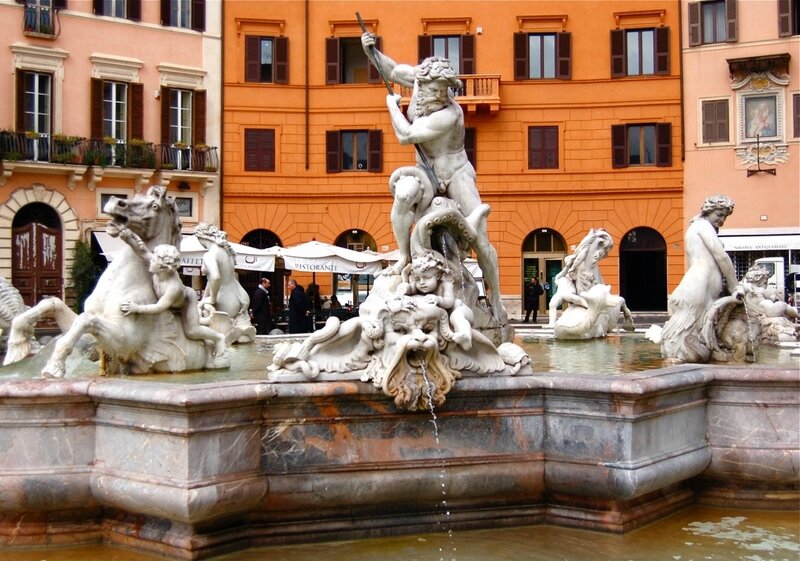

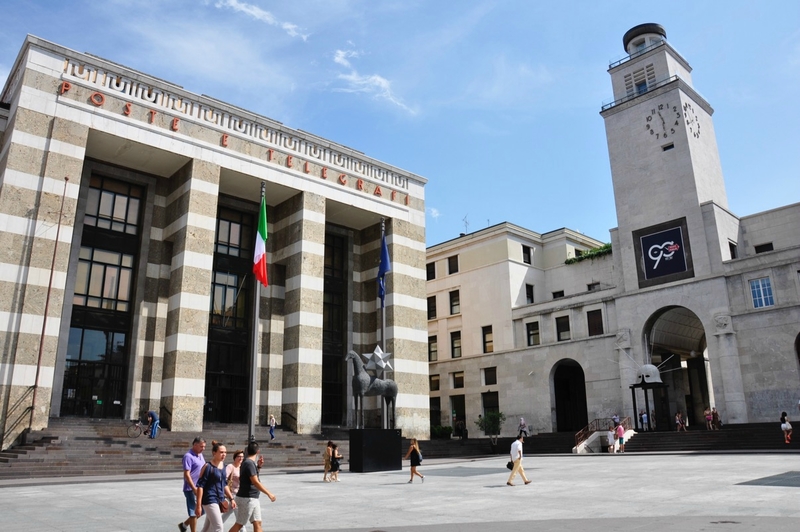
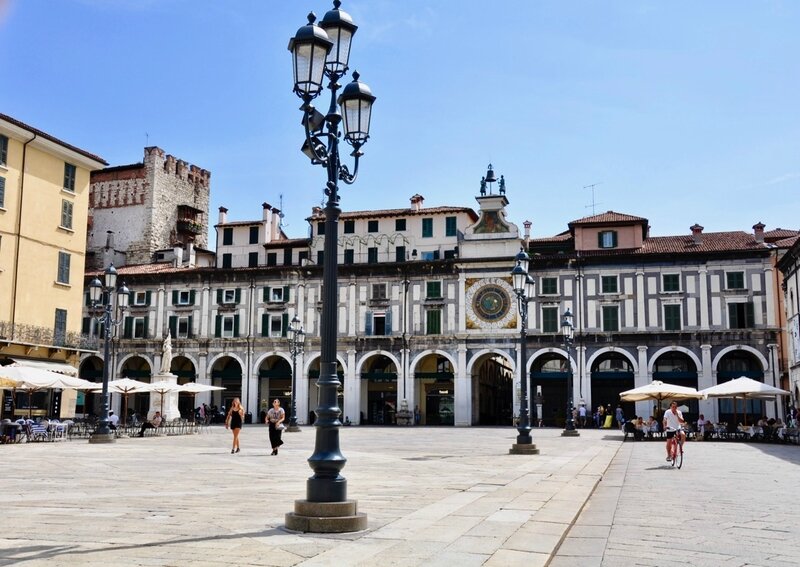
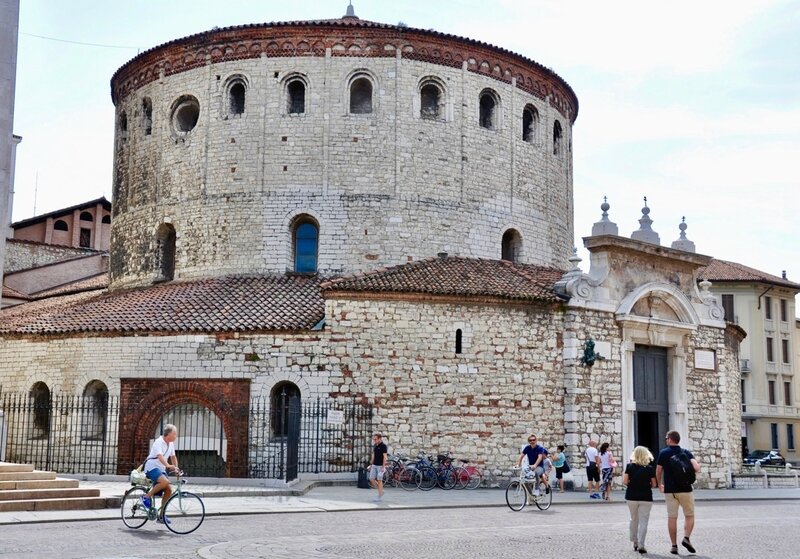

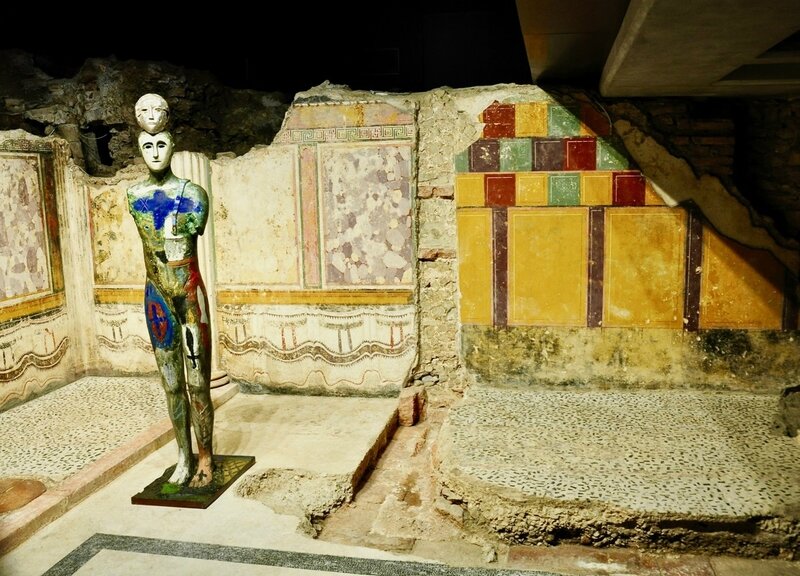
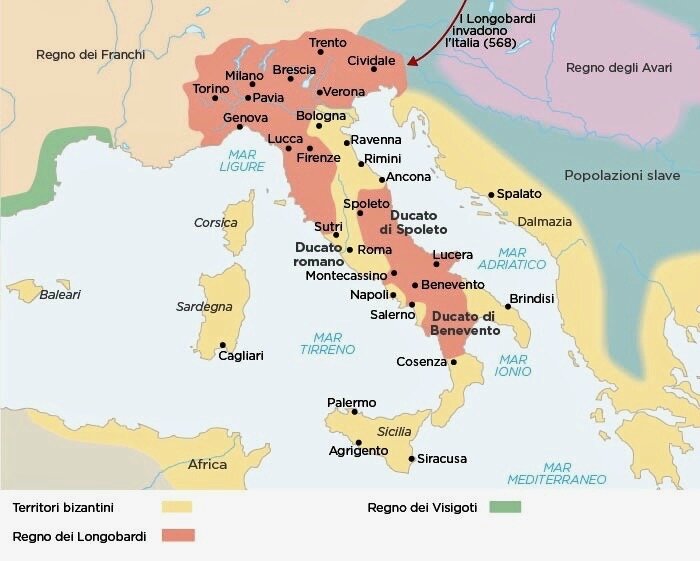





/http%3A%2F%2Fstorage.canalblog.com%2F90%2F22%2F321345%2F133275107_o.jpeg)
/http%3A%2F%2Fstorage.canalblog.com%2F07%2F72%2F321345%2F131523536_o.jpeg)
/http%3A%2F%2Fstorage.canalblog.com%2F26%2F84%2F321345%2F123841309_o.jpg)
/http%3A%2F%2Fstorage.canalblog.com%2F04%2F71%2F321345%2F120353169_o.jpg)